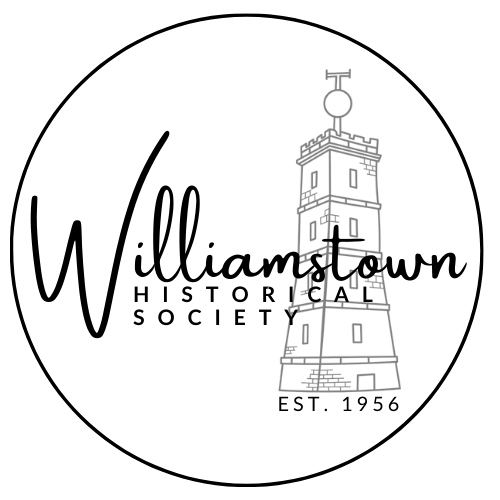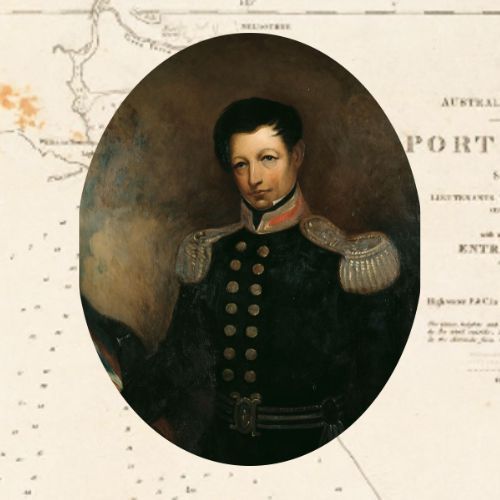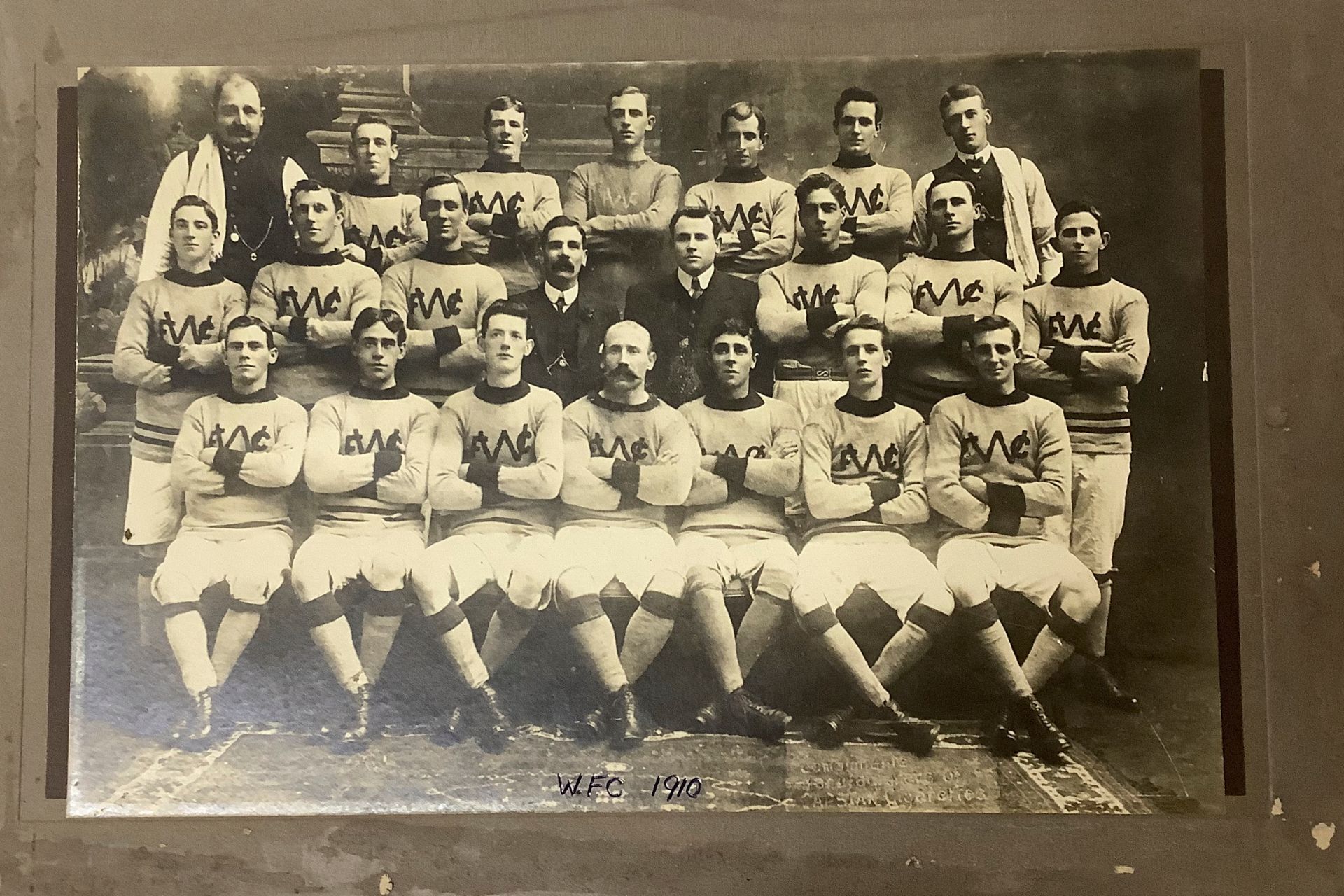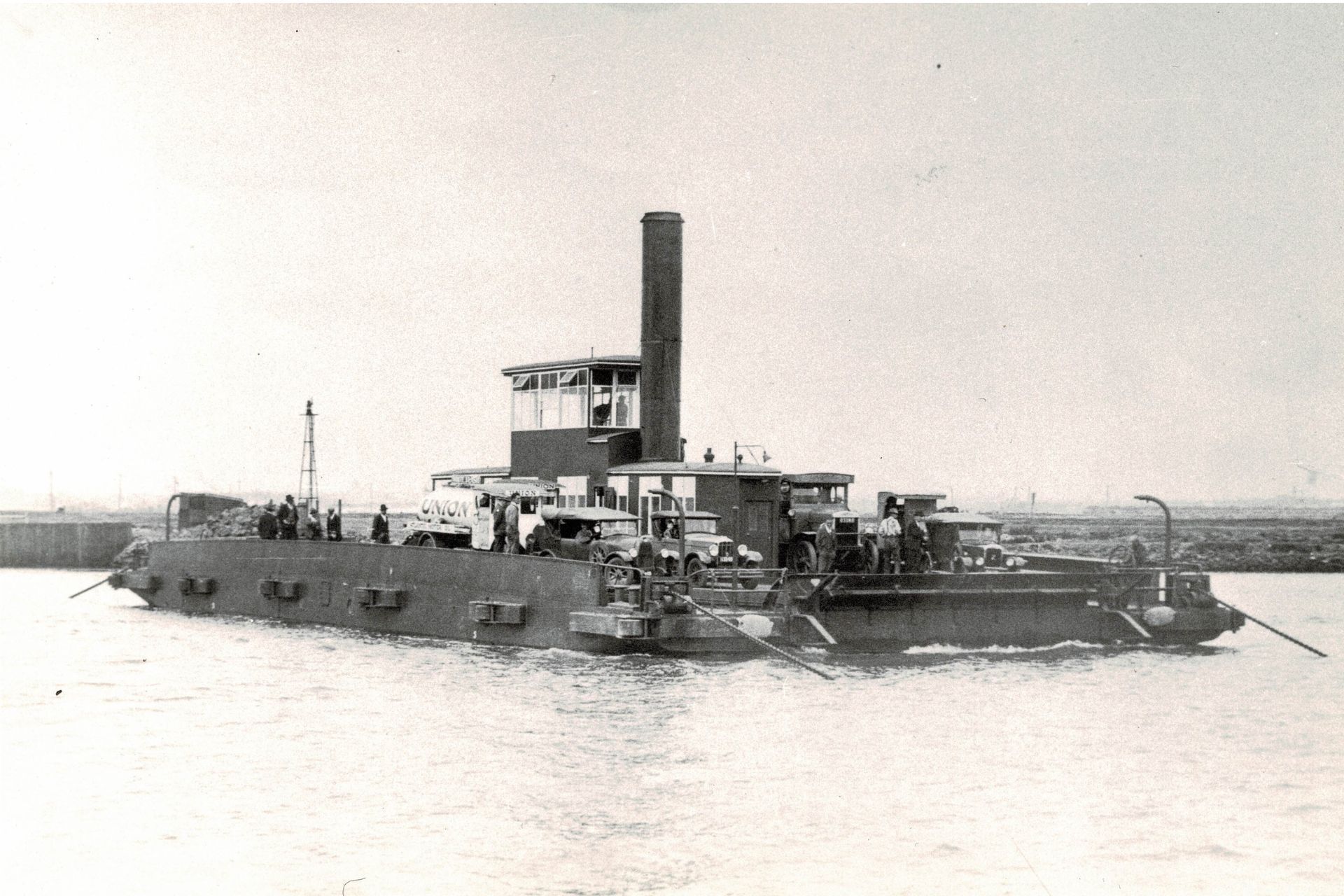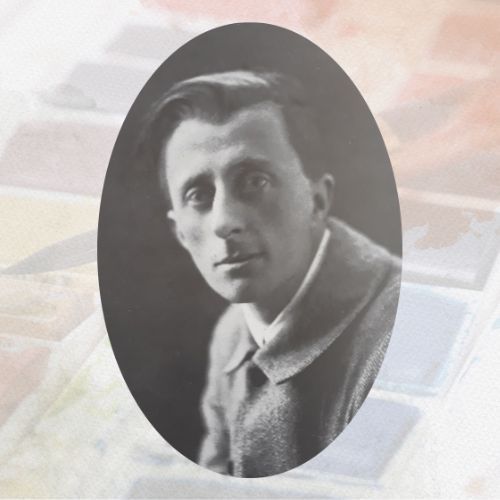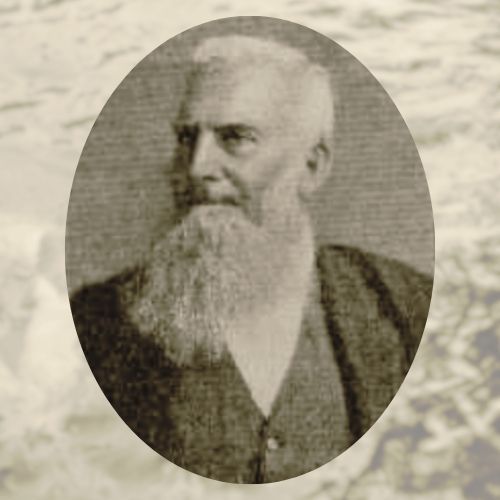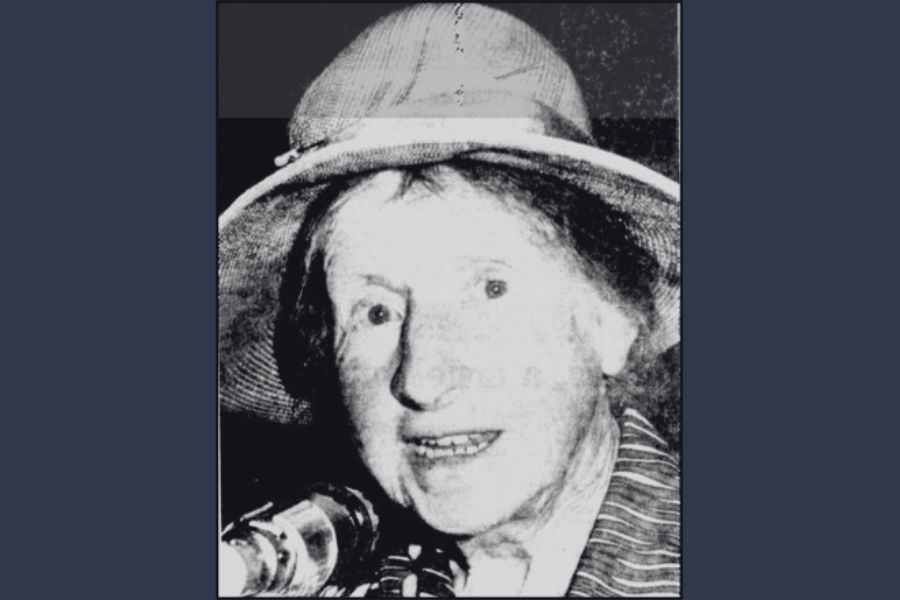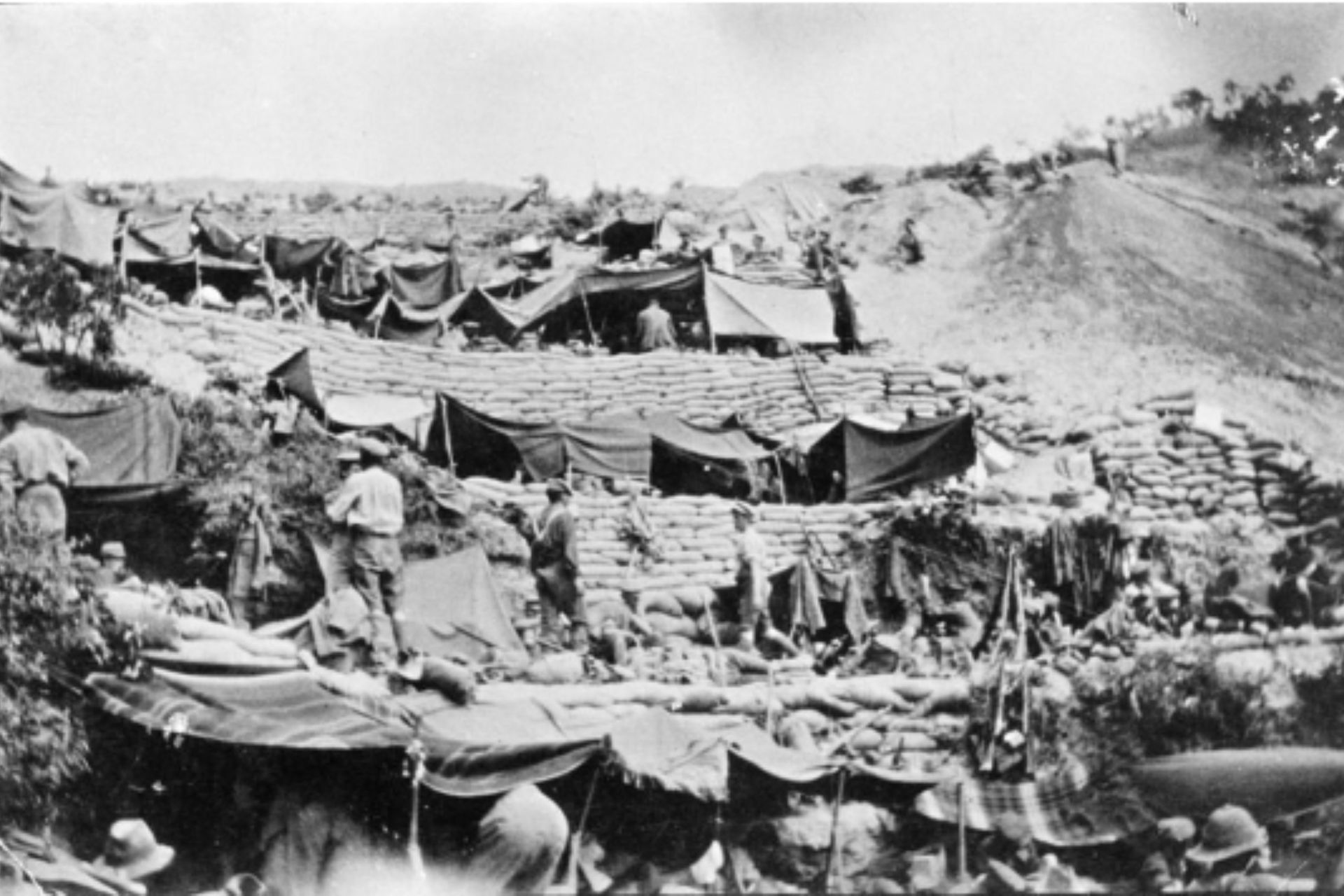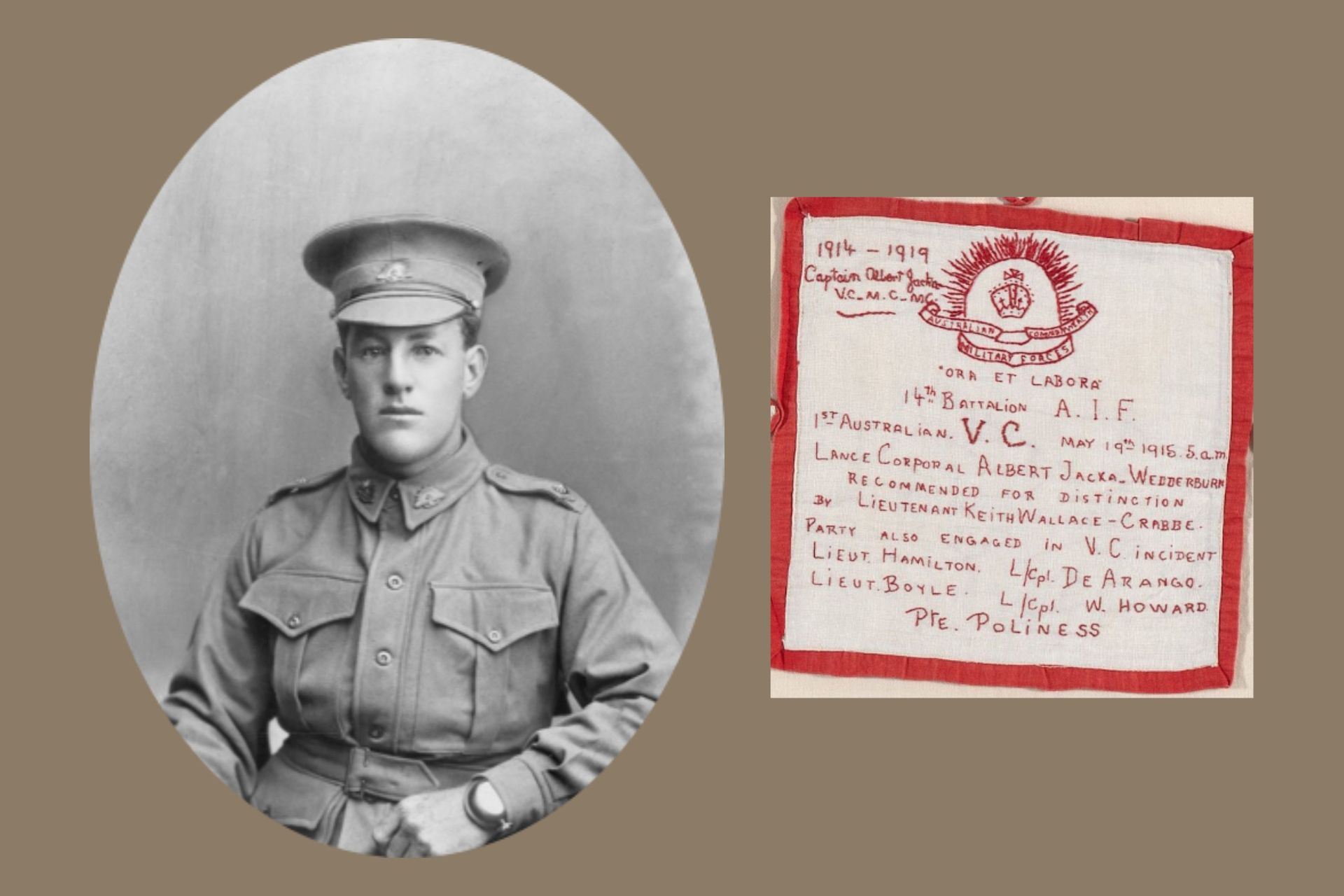Stewart Murray Hansen - WWI Patchwork Quilt

The Hansen Quilt
Stewart Murray Hansen, was born in Williamstown, Victoria on 7 February, 1892, the eldest of four children of Agnes Campbell (nee Stewart) and John George Leighton Hansen of 72 Pascoe Street, Williamstown. He attended Williamstown Primary School then Melbourne University High School and the Workingmen's College.
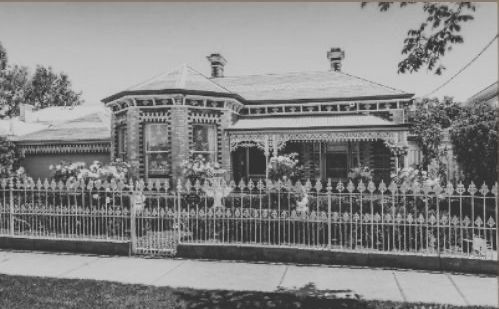
Before war broke out, he trained as an architect, but one month after war was declared, in September, 1914, he enlisted and officially joined the AIF on 1 October, 1914 as a Private.
He embarked on the HMAT Ulysses with the second convoy of 19 ships that left Albany on 31 December, 1914.
He began life in the army as a Private, was promoted to Sergeant on his voyage to the Middle East, was appointed a Second Lieutenant on 27 May, 1915, a Lieutenant on 20 January, 1916 and a Captain and Company Commander C. Company, 14th Battalion, 4th Brigade AIF, on 1 March, 1916.
He was amongst the troops of the 14th Battalion fighting at Gallipoli from the second day of landing on 26 April, 1915. In his letter home dated 13 June, 1915, he described watching the landing on 25 April and the “terrific naval bombardment”. He also states in the same letter that the “naval guns somewhat prepared me for the sharper crack of rifles and shell which we experienced during five solid weeks of trench warfare”.
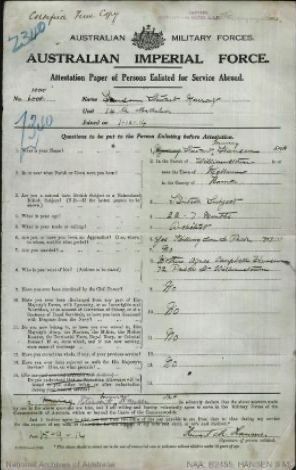
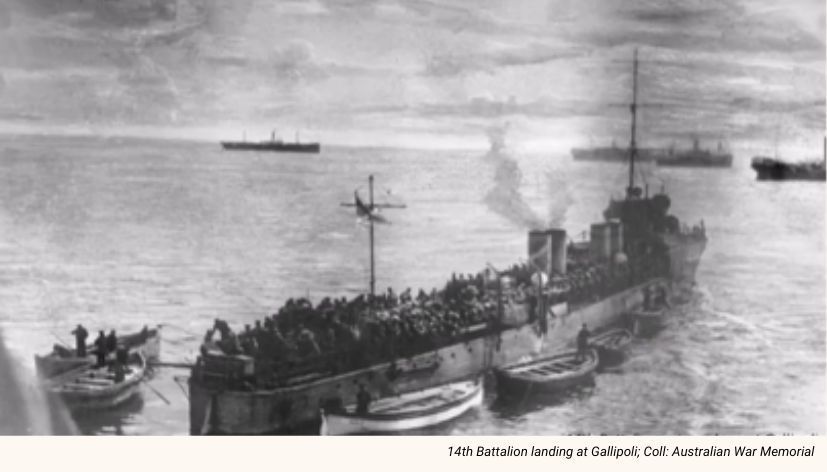
In May, 1915 he obtained his commission for bravery on the field at Gallipoli. His service as a temporary Company Adjutant at Gallipoli was commended by Brigadier General John Monash: ‘I consider him the best Company Commander in this Brigade’.
While at Gallipoli he utilised his experience as an architect and designed and engineered Courtney’s Post, the scene of particularly ferocious fighting during the Turkish attack of 19 May, 1915 and it was for his actions to oust the enemy from part of the post that Private Albert Jacka was awarded the Victoria Cross.
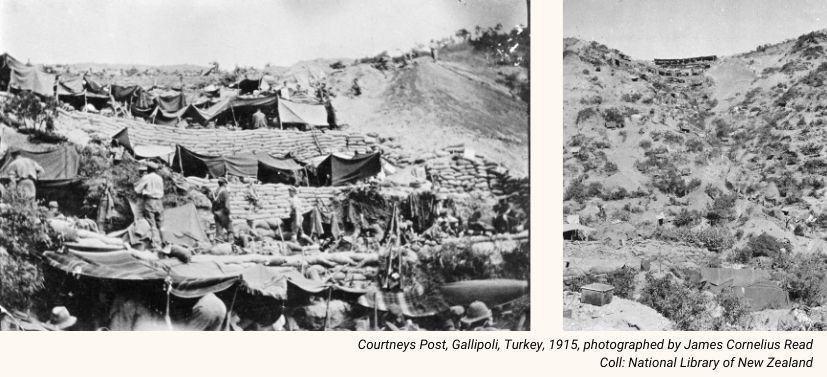
He was a prolific letter writer and wrote home as often as he could. His letters from Gallipoli show that he was extremely confident of Allied success in that campaign. In general, his letters are accounts of daily happenings with little personal reflection. He refers constantly to "Williamstown boys" whom he made every effort to visit or contact, whether at the front or on leave.
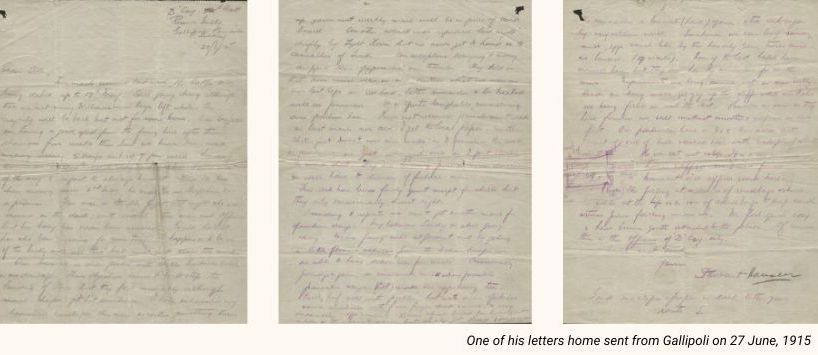
His letter of 27 June, 1915 states “Still going strong although not many Williamstown boys left whole. The majority will be back but not for some time.” And “Dave W. has been missing since 2 May, he may be in hospital or a prisoner".
"There was a terrible fight that night and he was missed in the dark with several other men and officers, but his body has never been recovered. Gerald Calcutt has also been missing for some time.” Lance Corporal Gerald Calcutt, from Victoria Street, Williamstown, was eventually reported as killed in action on 25 May, 1915.
He meticulously kept a diary while overseas filling in what he got up to each day, however mundane, and wrote numerous letters home to his family. His letters and diaries are all now part of the Australian War Memorial Collection.
On 27 January, 1916 he wrote:
Battalion Training – Guards
Day Out – Bed Early
And on the 29 January, 1916 wrote:
Washing Day – Kit Inspection
Pay Day
Letter Home
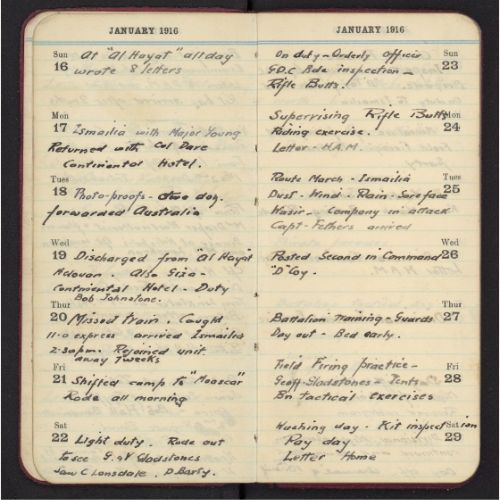
He also kept drawings of the company’s position while at Gallipoli.
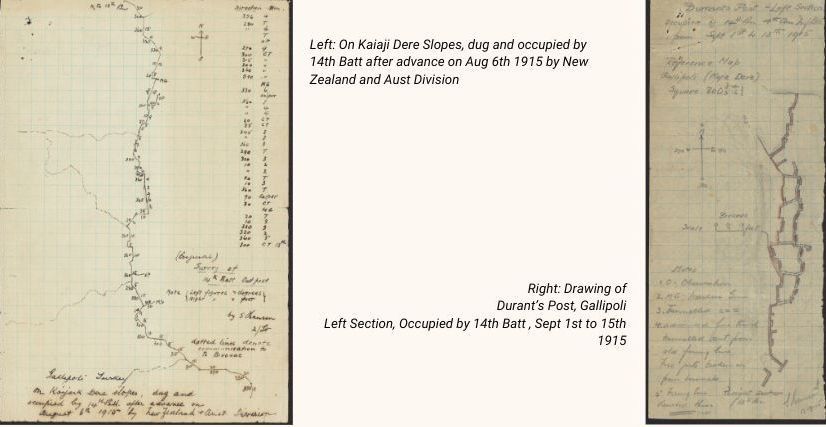
Stewart was evacuated from Gallipoli in early December 1915 suffering from malnutrition, typhoid, jaundice, dysentery and severe frost bite to his feet. Although he was evacuated to Egypt via Mudros, Greece due to illness, army records listed Stewart as “died at Gallipoli,” and his mother received this notification. However, many weeks later she received a letter from her son, telling her he was no longer at Gallipoli, but was now recuperating in Egypt.
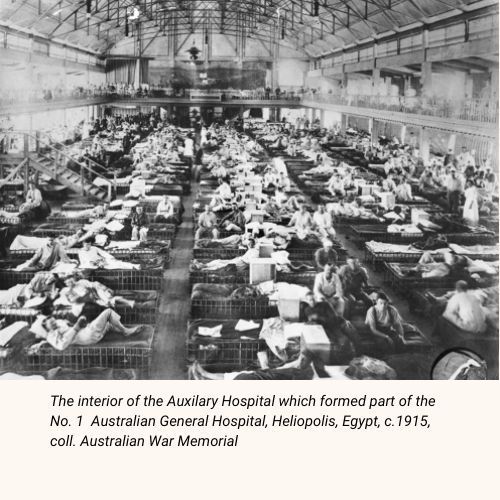
Mrs Hansen then sent a “Please explain” letter to Defence Records who admitted their error, assuring her that her son was receiving the best medical treatment in Egypt and regaining his strength.

His letters home to his family were sometimes published in the local newspapers. In a letter published in the Williamstown Chronicle on Saturday 3 April, 1915, just two weeks before the landing at ANZAC Cove, Gallipoli, he is in Heliopolis, Egypt, training with a number of the local Williamstown lads and talks about the six-week sea voyage, not being impressed with Alexandria, and visiting the Pyramids. In this letter he mentions Les Hansen, Tom Allen, Andy McDowall, Geoff Hall and that he had spent some time with ‘Pilot’ Dawes’s son Ross Dawes.
In another letter published in the Williamstown Advertiser on Saturday 15 January, 1916 he mentions how he is going, news on the situation of the war, and that he had seen three Williamstown men: Geoff Hall, young Duff and Charles Ronald ‘Darkey’ Griffiths.
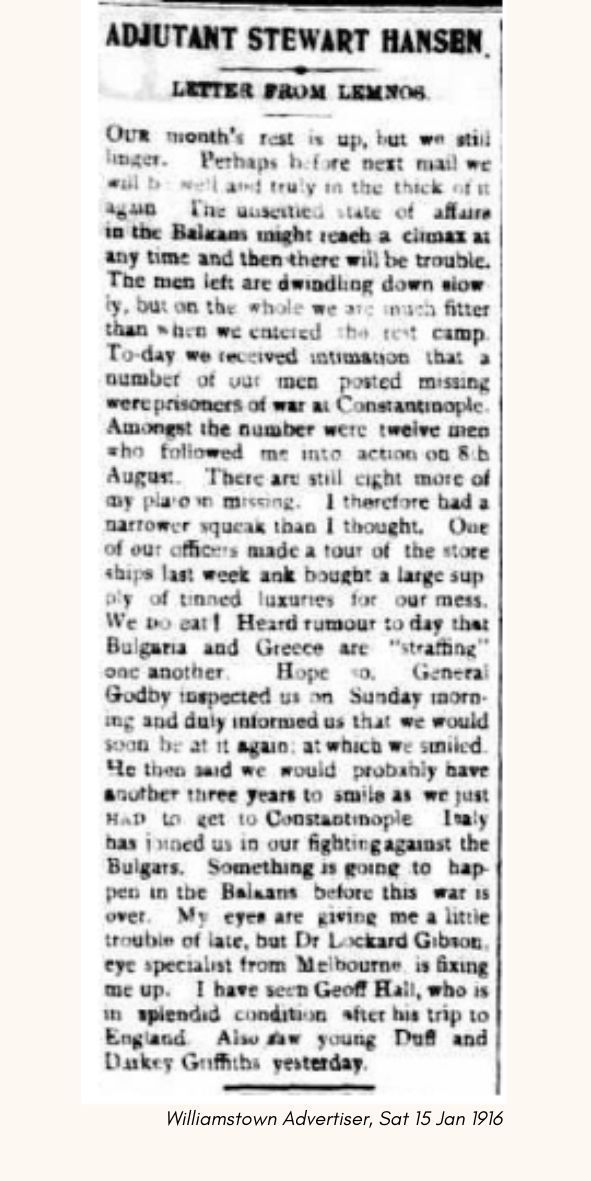
At the start of June, 1916, Captain Hansen departed Alexandria along with the rest of the 14th Battalion and headed to join the fighting in France, arriving in Marseilles on 8 June, 1916.
He was awarded a Military Cross for his initiative and gallantry on 26 & 27 August, 1916 at Mouquet Farm, France, part of the Battle of the Somme.
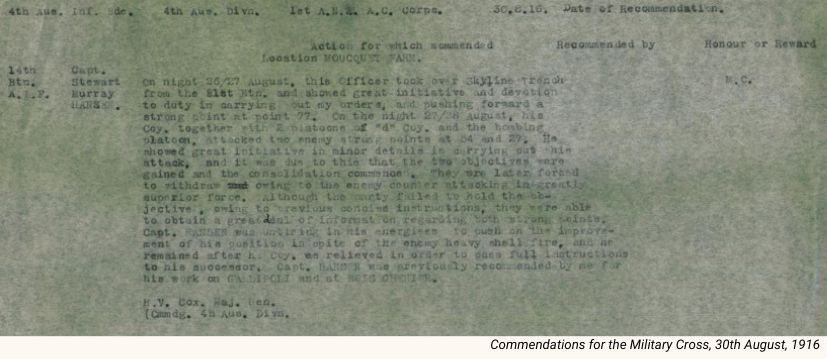
The full citation reads:
“On night 26/27 August, this officer took over Skyline Trench from the 21st Battn., and shewed great initiative and devotion to duty in carrying out my orders, and pushing forward a strong point at point 77. On the night 27/28 August, his company along with two platoons of ‘D’ company and the bombing platoon, attacked two enemy strong points at 54 and 27. He shewed great initiative in minor details in carrying out this attack, and it was due to this that the two objectives were gained and consolidation commenced. They were later forced to withdraw owing to the enemy counter attacking in greatly superior force. Although the party failed to hold the objective, owing to previous concise instructions, they were able to obtain a great deal of information regarding both strong points. Captain Hansen was untiring in his energies to push on the improvement of his position in spite of the enemy heavy shell fire, and he remained after his company was relieved in order to pass full instructions on to his successor. Captain Hansen was previously recommended by me for his work on Gallipoli and at Boys Grenier.”
Major General Commanding 4th Australian Division
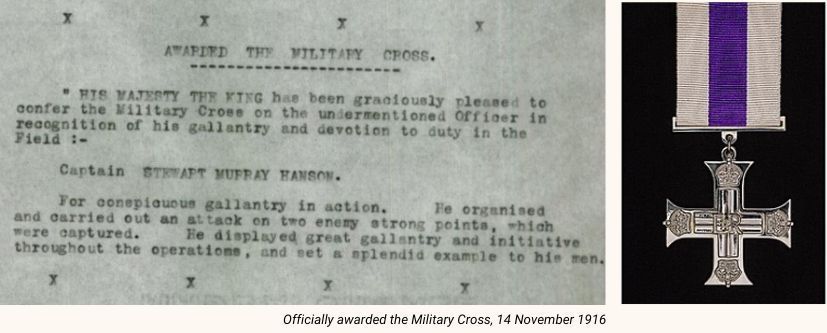
An extract from the Second Supplement No. 29824 to the London Gazette of 14 November, 1916 stated:
“HIS MAJESTY THE KING has been graciously pleased to confer the Military Cross on the undermentioned Officer in recognition of his gallantry and devotion to duty in the Field: Captain STEWART MURRAY HANSEN. For conspicuous gallantry in action. He organised and carried out an attack on two enemy strong points which were captured. He displayed great gallantry and initiative throughout the operations and set a splendid example for his men.”
On 14 January, 1917, he travelled to Cove Bay, Kincardineshire, Scotland and became engaged to Dora Skene.
The entry in his Diary for 14 January, 1917 says:
Snow. Engaged.
Feeling funny

His last diary entry on 31 January, 1917 was:
“Boche working party seen at 5am, dispersed, Quiet morning, snowing and a little warmer.”
Three weeks later, on 5 February, 1917, Captain Stewart Murray Hansen was wounded at Gueudecourt where a piece of shrapnel crashed through his helmet into his forehead. He died from those wounds two days later, on 7 February, 1917, the day of his 25th birthday.
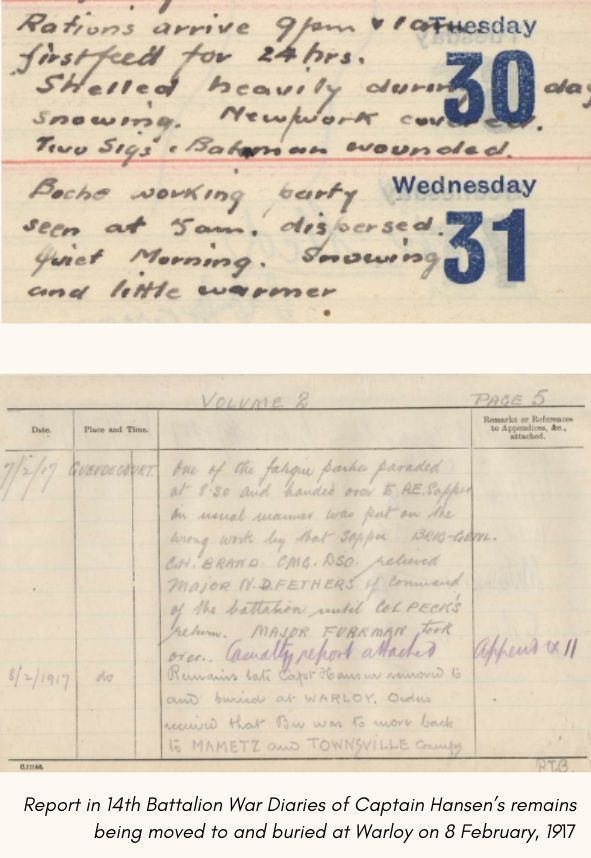
Captain Alf Williamson, a friend and fellow Captain in the 14th Battalion wrote the following to Mr and Mrs Hansen which was published in the Williamstown Chronicle on 5 May, 1917.
‘I am writing these few lines to let you know something of the death of our dear pal, Stewart. Stewart’s Company was chosen to support another battalion in attack, and it was whilst leading them in this action that he was killed, thus dying a soldier’s noblest death. Killed in Action – a fitting end to the sterling and noble life he had always lived’.
“We have lost our best pal and the men their best friend. We buried him in the military cemetery at a French village called Warloy and we are having a monument placed over his resting place.”
The same article also quoted Chaplin Captain Cope:
“Stewart was one of the best men in the battalion, as a man of healthy principles and high ideals, and whose cultivated mind and eager disposition, made him a companion to be thankful for.”
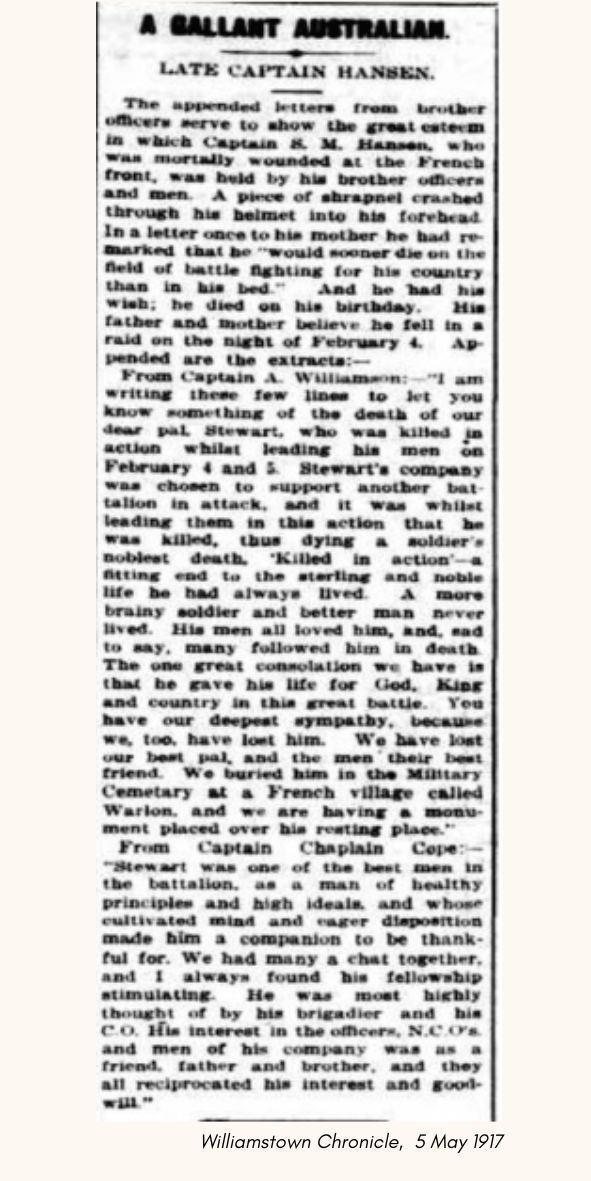
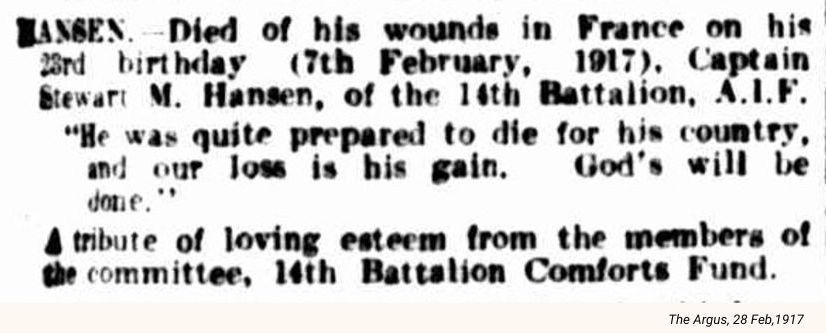
Stewart Murray Hansen is buried in Warloy-Baillon Communal Cemetery Extension, Departement de la Somme, Picardie, France, Plot VIII. D. 28.
After his death, Stewart’s brother Leighton Barbour Hansen, married Dora Skene in Aberdeen in June, 1923. By 1928 they were living back in Williamstown. They went on to have two sons Philip Stewart Hansen and Stanley John Leighton Hansen.
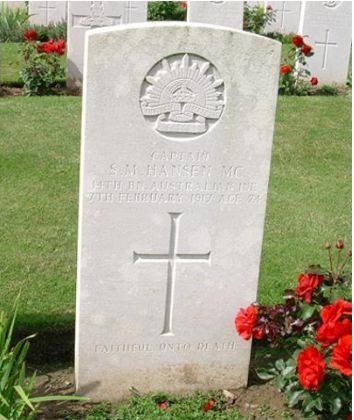
Stewart’s signature appears on the quilt twice
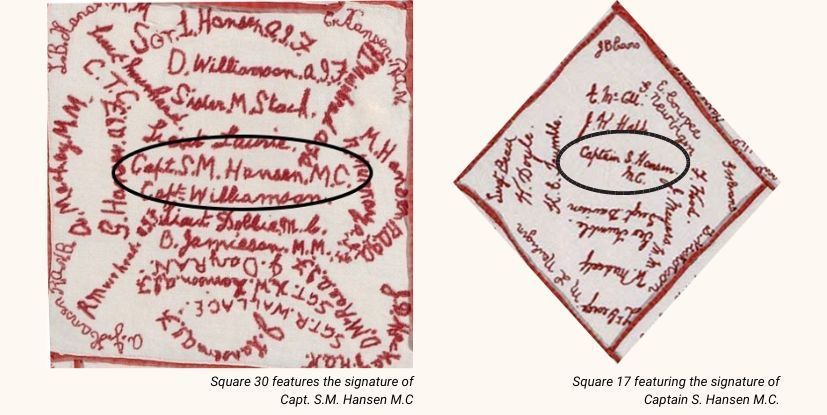
References:
National Archives of Australia – Defence and War Service Records
Ancestry.com
Trove newspapers
